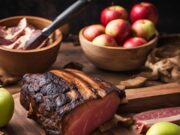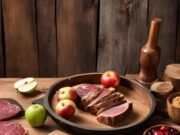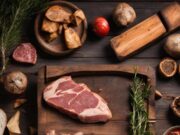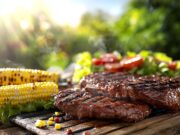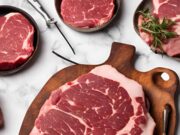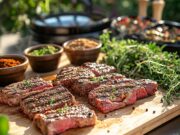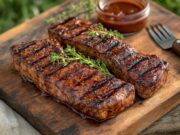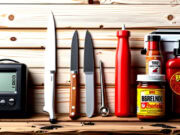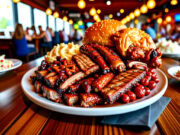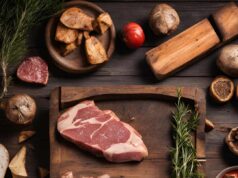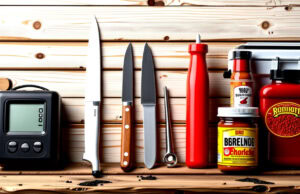Grilling seafood can significantly enhance your outdoor cooking experience, providing a delightful combination of flavors and textures that are sure to impress your guests.
This guide outlines the essential techniques for mastering BBQ seafood, including how to select the freshest ingredients and perfect your grilling method.
You will discover the appropriate tools, heat control strategies, and flavor enhancements that can elevate your seafood dishes to new heights.
Whether you are a novice or a seasoned grill master, this guide will assist you in achieving perfect results consistently.
Key Takeaways:
- Choose the right seafood for grilling to ensure optimal flavor and texture.
- Master heat control and use proper grilling techniques for perfectly grilled seafood every time.
- Enhance flavors by using marinades, rubs, and creative serving suggestions for a memorable BBQ seafood experience.
Choosing the Right Seafood for Grilling
Choosing the right seafood for grilling is essential for achieving an exceptional BBQ experience. This includes selecting high-quality fish such as cod, halibut, and salmon, as well as shellfish like shrimp and lobster, while also considering sustainability and freshness.
When selecting seafood, look for vibrant colors and a fresh, ocean-like scent—these are strong indicators of quality and freshness. Pay attention to texture as well; the flesh should be firm and not easily flake apart.
If you are planning to grill, it’s important to note that different types of seafood yield varied results. For instance, thicker cuts of fish like salmon require longer cooking times compared to delicate shrimp, which need just a few minutes on the grill.
Opting for sustainable choices can enhance both flavor and ethical considerations. Make sure to select seafood that is sourced responsibly, ensuring your grilling practices align with ecological standards. Employing techniques like marinating or using foil can also significantly contribute to achieving flavorful and moist dishes.
Preparing Your Seafood
Preparing seafood properly is essential for enhancing its flavor and ensuring food safety. Key steps involve marinating, seasoning, and utilizing appropriate cooking techniques to achieve a delicious grilled dish.
To maximize your seafood experience, you can explore various preparation methods that elevate the natural taste of the ingredients. Marinating seafood in a blend of citrus juices, herbs, and spices not only adds depth of flavor but also helps tenderize the flesh. Thoughtful seasoning—whether through dry rubs or flavorful sauces—plays a crucial role in creating that perfect dish.
It is also vital to practice safe handling and storage techniques, such as keeping seafood refrigerated and avoiding cross-contamination, to minimize health risks. By adhering to these food safety measures and preparation tips, you can create a delightful and safe seafood grilling experience.
Essential Tools and Accessories for Grilling
Utilizing the right tools and accessories for grilling seafood can significantly enhance your cooking experience. Essential items include a grill basket for delicate seafood, a meat thermometer to achieve perfect cooking temperatures, and a well-maintained grill to ensure optimal performance.
Investing in a high-quality set of grilling utensils, such as long-handled tongs and spatulas, allows for improved maneuverability and control when flipping and serving your seafood.
To maintain a pristine grill, it is advisable to use cleaning brushes and grill wipes, which are crucial for removing char and build-up, ultimately prolonging the life of your cooking equipment.
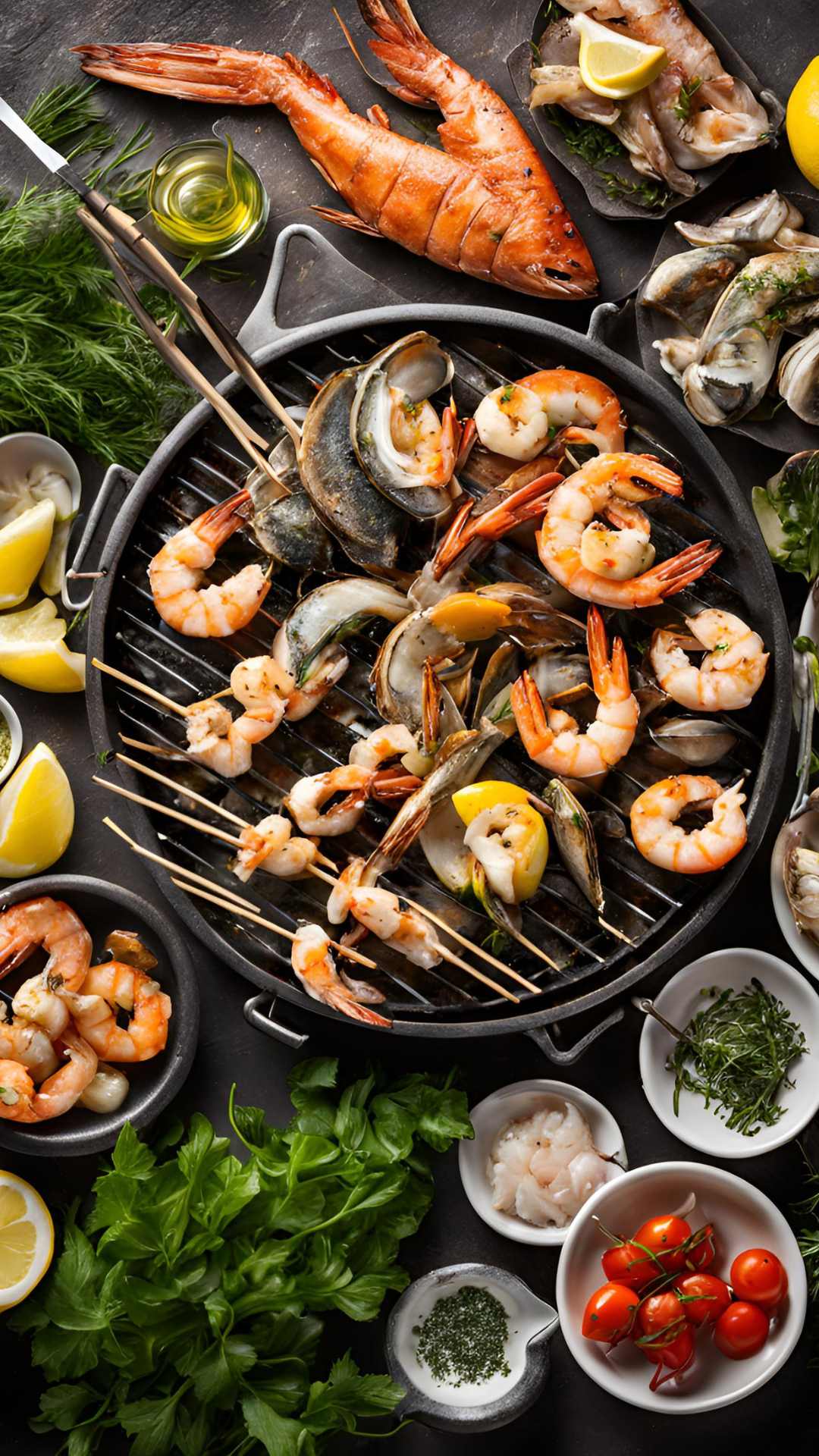
Accessories like marinades and flavor injectors can elevate the taste of grilled dishes, ensuring that each meal is not only visually appealing but also rich in flavor.
All these tools work together to create a seamless grilling experience, making the process of cooking seafood both enjoyable and rewarding.
Mastering Heat Control
Mastering heat control is essential for grilling seafood, as it requires understanding the differences between direct and indirect heat, as well as how to maintain the appropriate cooking temperatures for various types of seafood.
Achieving the ideal cooking temperature not only ensures that the seafood is cooked safely but also enhances its flavor and texture. For example, delicate fish like salmon typically require a medium heat of about 350°F to 400°F, while shrimp can be perfectly grilled over high heat for just a few minutes on each side.
To manage heat effectively, those grilling on charcoal should adjust the air vents to control airflow, thereby regulating the flame. Gas grillers can simply adjust the knobs to achieve consistent heat levels. Utilizing a meat thermometer can be invaluable in checking that fish reaches an internal temperature of 145°F, ensuring it is both delicious and safe to eat.
Grilling Techniques for Seafood
Grilling techniques for seafood encompass a range of methods designed to achieve the ideal texture and flavor. This provides seafood enthusiasts with options, such as using direct heat grilling for firmer fish and employing indirect heat for more delicate shellfish.
Grilling Fish
Grilling fish, such as tuna, swordfish, and halibut, requires specific techniques to ensure they remain moist and flavorful while achieving those attractive grill marks that indicate perfectly cooked seafood.
To achieve even cooking for these delicate proteins, begin by preheating the grill to medium-high heat, around 400°F. Marinating the fish in a simple blend of olive oil, lemon juice, and your choice of herbs can enhance the flavor and help retain moisture.
As a general guideline, aim to cook the fish for approximately 6-8 minutes per side, depending on its thickness. Always monitor for slight flaking, which indicates doneness. For particularly thick cuts, it may be beneficial to lower the heat after searing to ensure the insides cook thoroughly without drying out.
A sprinkle of salt and pepper just before grilling can enhance the natural flavors, ensuring that the final dish is both delicious and visually appealing.
Grilling Shellfish
Grilling shellfish such as shrimp and lobster can be a highly rewarding experience, offering the opportunity to utilize basting techniques and smoking pellets to impart a rich, smoky flavor to these delicate seafood options.
To achieve optimal results, it is crucial to marinate the shellfish in advance, enhancing their natural taste and adding layers of flavor. For shrimp, a straightforward mixture of garlic, lemon juice, and olive oil proves to be highly effective. Lobster, on the other hand, benefits from a butter-based marinade which also helps to retain moisture during the grilling process.
When using wood chips for smoking, hickory or applewood can beautifully enhance the flavors. It is important to be mindful of timing; shrimp cooks quickly, usually in just a few minutes, while lobster may require a bit more time to ensure that it remains perfectly tender. Additionally, basting with a seasoned butter blend throughout the cooking process can elevate the final dish, resulting in a delightful finish.
Enhancing Flavors While Grilling
Enhancing flavors while grilling seafood involves the strategic use of seasoning, marinades, and spices to elevate the taste profile of your dishes, making every bite a delight.
To achieve this, consider incorporating a variety of herbs such as dill, parsley, and cilantro, which can beautifully complement the natural sweetness of fish and shellfish. A squeeze of fresh lemon or lime juice can add a zesty brightness, while olive oil serves to bind the spices to the seafood, ensuring that each morsel is packed with flavor.
Marinades, particularly those featuring soy sauce or garlic, infuse the fish with deep umami notes that enhance its richness. Spice blends like Old Bay or Cajun seasoning can provide a robust kick, ideal for those who appreciate a bit of heat.
Additionally, fresh ingredients like tomatoes and avocados can balance out the dish, creating a harmonious flavor profile that delights the palate.
Serving Suggestions for Grilled Seafood
Serving suggestions for grilled seafood can greatly enhance the dining experience. You might consider options such as pairing grilled fish with seasonal vegetables or creating an appealing platter for family gatherings that ensures guest satisfaction.
Incorporating fresh herbs or citrus garnishes significantly boosts the visual appeal of each dish, making them not only delicious but also vibrant and inviting. Think about complementing grilled shrimp with a zesty mango salsa or serving salmon alongside a quinoa salad infused with dill and lemon.
These choices enhance the flavor profile while promoting a balanced, healthy meal that is rich in nutrients. When thoughtfully arranged, these diverse serving ideas can create an impressive spread that delights the senses, ensuring every guest enjoys a flavorful and nutritious dining experience.
Frequently Asked Questions
What are the essential grilling techniques for perfect results when cooking BBQ seafood?
The essential grilling techniques for perfect results when cooking BBQ seafood include properly marinating the seafood, using direct and indirect heat, and properly timing the grilling process.
How important is it to properly marinate seafood before grilling it?
Properly marinating seafood before grilling is crucial as it helps to infuse flavor and also prevents the seafood from drying out on the grill.
What is the best type of seafood to grill on a BBQ?
The best type of seafood to grill on a BBQ are firm, meaty fish such as salmon, tuna, swordfish, and shrimp. These types of seafood hold up well on the grill and do not fall apart easily.
Can BBQ seafood be cooked using both direct and indirect heat?
Yes, using both direct and indirect heat is recommended when grilling seafood on a BBQ. Direct heat is used to sear and cook the exterior of the seafood while indirect heat helps to evenly cook the interior without burning the outside.
How do you know when seafood is done cooking on the BBQ?
Seafood is done cooking on the BBQ when it is opaque and flakes easily with a fork. It is important to not overcook seafood as it can become rubbery and lose its flavor.
What are some additional tips for mastering BBQ seafood?
Some additional tips for mastering BBQ seafood include using a clean and oiled grill, flipping the seafood only once, and using a meat thermometer to ensure proper cooking temperatures are reached.


